Birdfinding.info ⇒ Common and easy to find across most of its range. The “Grand Cayman” form is uncommon and local, mostly limited to dry woodlands on the eastern side of the island, but can usually be found at the Botanic Park and along the Mastic Trail.
Western Spindalis
Spindalis zena
Endemic to the northern and western Caribbean region: the Bahamas; Turks & Caicos; Cuba and its satellites; Grand Cayman; and Cozumel. Generally common in woodland habitats throughout most of its range.
The five subspecies are recognizable as distinct forms:
“Dark-backed Spindalis” (townsendi): Grand Bahama and Abaco; accidental vagrant to southern Florida.
“Black-backed Spindalis” (zena): the Bahamas north to the Berry Islands and south to Turks & Caicos; a frequent vagrant to southern Florida, where it has bred.
“Cuban Spindalis” (pretrei): Cuba and its satellite islands; one confirmed record from the Florida Keys.
“Grand Cayman Spindalis” (salvini): Grand Cayman.
“Cozumel Spindalis” (benedicti): Cozumel.
The forms of Western Spindalis are incipient species that may be due for recognition as two or more separate species. The “Cozumel” form is especially distinctive and isolated from the others, and appears to be a strong candidate for full species status. The others clearly represent two lineages, with the Bahamian “Dark-backed” and “Black-backed” forms in one, and the “Cuban” and “Grand Cayman” forms in the other.
Identification
Males are distinctive, with bold black-and-white head and wing patterns and richly colored napes, rumps, and breasts. There are consistent differences among the forms, although each also shows significant internal variability.
“Dark-backed” has an olive-brown back, graduated yellow to chestnut nape and rump, blackish bib, and orange breast.
“Black-backed” has a black back, mostly chestnut nape and rump, blackish bib, and variable coloration on the breast—that ranges from narrowly yellowish orange to dark chestnut surrounded by progressively paler shades of orange.
“Cuban” has an olive back and mostly uniform orange nape, rump, and breast—the predominant shade of orange varies individually from yellowish to burnt-orange. Unlike other forms, typically has little contrast between the bib and the throat.
“Grand Cayman” has an olive back and graduated yellow to burnt-orange nape, rump, and breast. Similar to “Cuban,” but typically shows more gradations of color in these areas, and a strong contrast between the bib and the throat.
“Cozumel” has a brown back and the nape, rump, and breast are mostly chestnut with a yellow edge (with very little orange). Appears to have a consistently larger bill than the other forms.
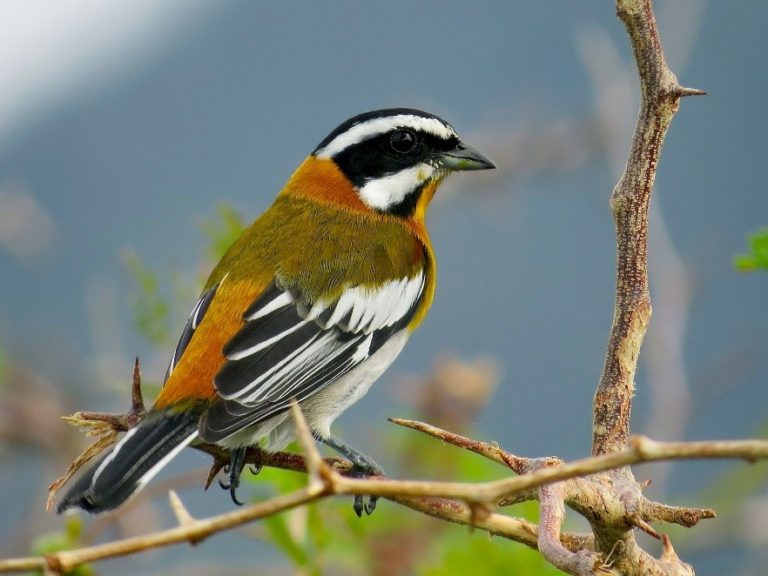
“Cuban Spindalis,” S. z. pretrei, male. (Topes de Collantes National Park, Cuba; January 4, 2016.) © Kenneth Pinnow
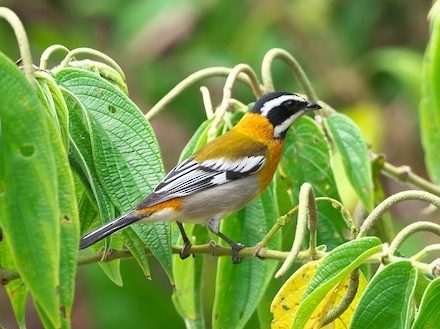
“Cuban Spindalis,” S. z. pretrei, male. (Topes de Collantes National Park, Cuba; February 17, 2017.) © Paul Tavares

“Grand Cayman Spindalis,” S. z. salvini, male. (Grand Cayman; March 19, 2013.) © Alan Van Norman
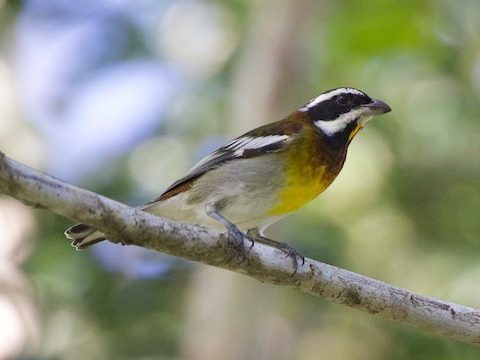
“Cozumel Spindalis,” S. z. benedicti, male. Note its largely brown-and-yellow plumage. (San José, Cozumel, Mexico; November 19, 2017.) © Cory Gregory
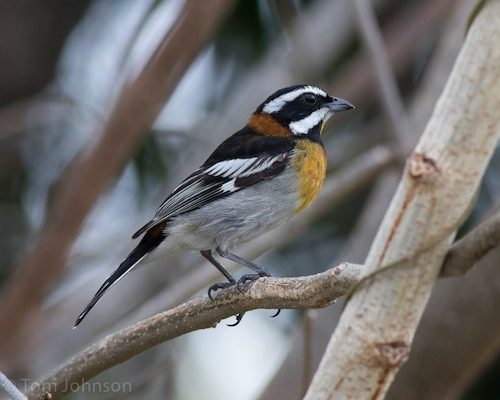
“Black-backed Spindalis,” S. z. zena, male. Note its mostly chestnut nape. (Gulfstream Shores, Key Largo, Florida; May 5, 2017.) © Tom Johnson
The first-year male “Black-backed’s” back is mottled olive and black, so it is easily confused with “Dark-backed.”
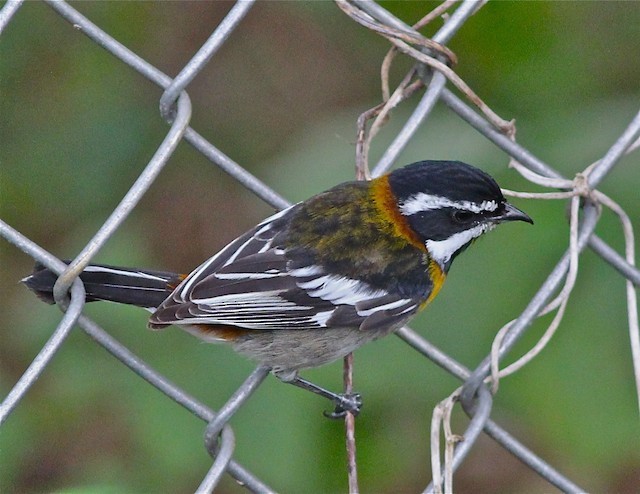
“Black-backed Spindalis,” S. z. townsendi, first-year male. Note its mottled olive and black back. (Markham Park, Sunrise, Florida; January 7, 2016.) © Bill Hill
Females are olive-gray overall, with a muted version of the male’s facial pattern, most noticeably a broad, pale whisker stripe. “Cuban” generally has stronger markings than the others, with a broader, paler eyebrow, and more pronounced contrasts in the wings.

“Cuban Spindalis,” S. z. pretrei, female. (Turquino National Park, Cuba; March 30, 2017.) © John Lloyd
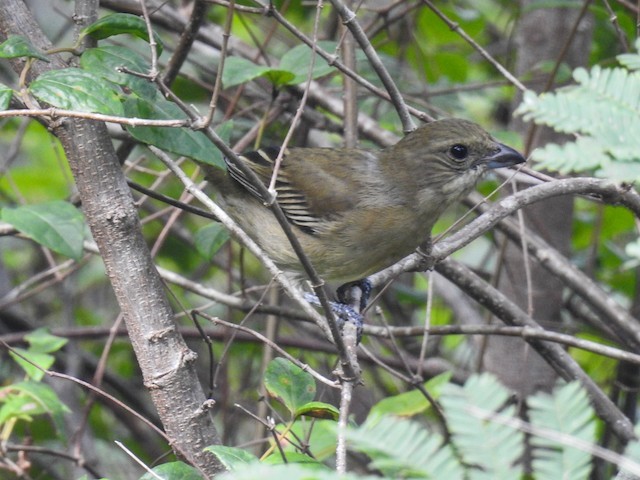
“Cozumel Spindalis,” S. z. benedicti, female. (San Gervasio, Cozumel, Mexico; August 26, 2017.) © Pam Rasmussen
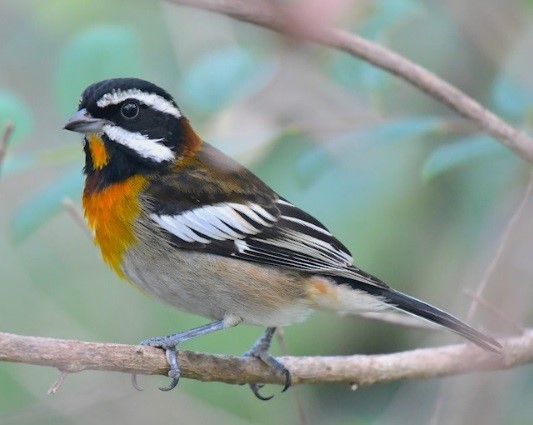
“Dark-backed Spindalis,” S. z. townsendi, male. (Treasure Cay, Abaco, Bahamas; December 30, 2017.) © Christopher Johnson
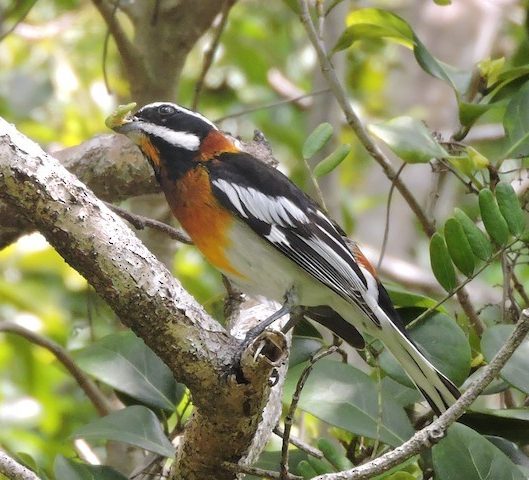
“Black-backed Spindalis,” S. z. zena, male. (Blue Holes National Park, North Andros, Bahamas; April 25, 2018.) © Kathryn Cowdery

“Cuban Spindalis,” S. z. pretrei, male. Note the lack of a dark bib, and little contrast between the chest and throat. (Viñales Valley, Pinar del Río, Cuba; February 11, 2015.) © Josh Vandermeulen
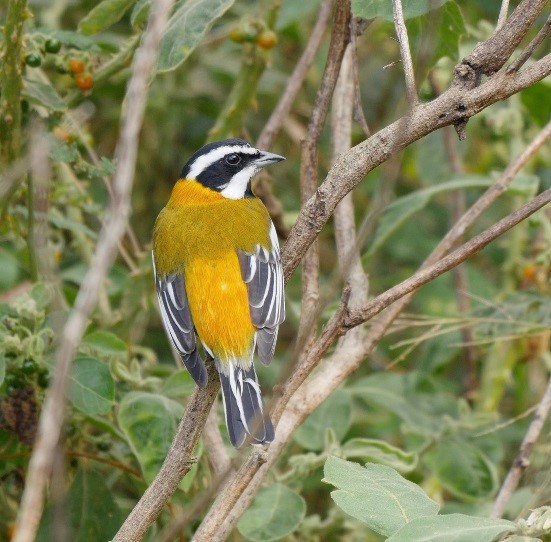
“Cuban Spindalis,” S. z. pretrei, male. (Puerto Esperanza, Pinar del Río, Cuba; January 14, 2017.) © Greg Baker
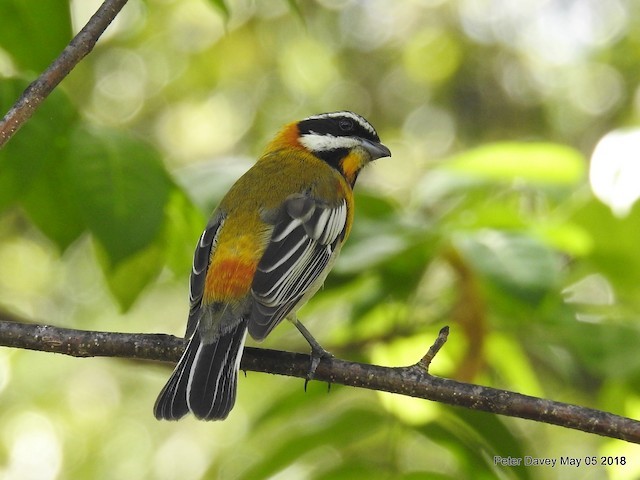
“Grand Cayman Spindalis,” S. z. salvini, male, distinguished from “Cuban” by its multicolored nape and rump. (Arlington Estate, Grand Cayman; May 5, 2018.) © Peter Davey
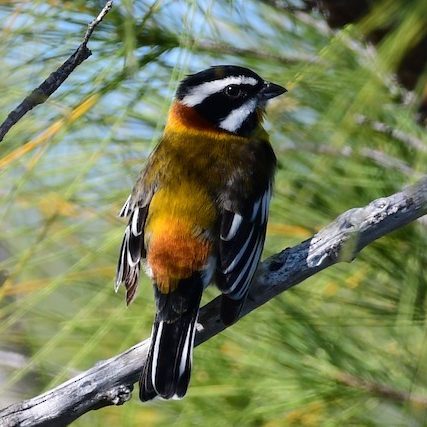
“Dark-backed Spindalis,” S. z. townsendi, male. Note its colorful nape and rump. (North Riding Point, Grand Bahama; December 13, 2017.) © Duncan Mullis
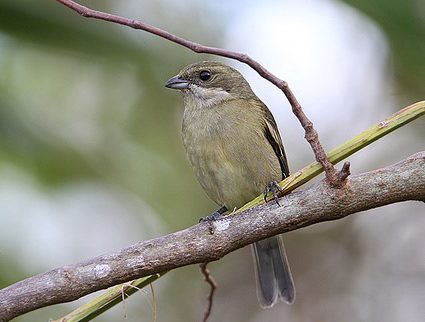
“Dark-backed Spindalis,” S. z. townsendi, female. (Old Citrus Farm, Abaco, Bahamas; January 7, 2013.) © Christoph Moning
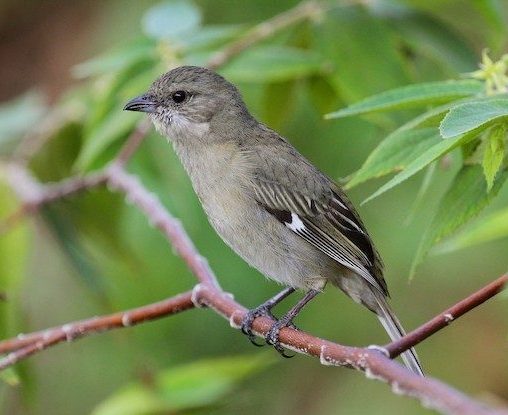
“Black-backed Spindalis,” S. z. zena, female. (New Providence, Bahamas; February 14, 2014.) © Paul Lewis

“Grand Cayman Spindalis,” S. z. salvini, female or immature. (Queen Elizabeth II Botanic Park, Grand Cayman; April 4, 2012.) © Karl Overman
Notes
Polytypic species consisting of five subspecies that are all distinct forms and potentially separate species.
“Dark-backed Spindalis” (townsendi), of the northern Bahamas, is closely related to “Black-backed Spindalis,” differing in its olive-brown back, more multicolored nape and rump, and clearer voice.
“Black-backed Spindalis” (zena), of the central and southern Bahamas and Turks & Caicos, is closely related to “Dark-backed Spindalis,” but has a black back, simpler coloration, and wheezier voice.
“Cuban Spindalis” (pretrei), of Cuba and its satellite islands, is closely related to “Grand Cayman Spindalis.” Both have largely olive and orange plumage, though “Cuban” is more uniform. They also differ vocally.
“Grand Cayman Spindalis” (salvini), confined to Grand Cayman, is closely related to “Cuban Spindalis,” but differs in having more multicolored plumage, and by voice.
“Cozumel Spindalis” (benedicti), confined to Cozumel, seems likely to be recognized as a separate species eventually. It is readily distinguishable from other forms of Western Spindalis based on voice, largely brown-and-yellow plumage, and its notably heavy bill.
(Note that the names “Dark-backed” and “Black-backed” are not in widespread usage. Authoritative sources that provide common names for these forms have called them “Bahamas Green-backed” and “Bahamas Black-backed.”)
All spindalises were formerly considered to be a single species, the Stripe-headed Tanager, S. zena, but have subsequently been recognized as at least four separate species.
References
eBird. 2018. eBird: An online database of bird distribution and abundance. Cornell Lab of Ornithology, Ithaca, N.Y. http://www.ebird.org. (Accessed December 8, 2018.)
Garrido, O.H, and A. Kirkconnell. 2000. Field Guide to the Birds of Cuba. Cornell University Press, Ithaca, N.Y.
Hilty, S. 2018. Western Spindalis (Spindalis zena). In Handbook of the Birds of the World Alive (J. del Hoyo, A. Elliott, J. Sargatal, D.A. Christie, and E. de Juana, eds.). Lynx Edicions, Barcelona. https://www.hbw.com/node/61832. (Accessed December 5, 2018.)
Howell, S.N.G., I. Lewington, and W. Russell. 2014. Rare Birds of North America. Princeton University Press, Princeton, N.J.
Howell, S.N.G., and S. Webb. 1995. A Guide to the Birds of Mexico and Northern Central America. Oxford University Press, Oxford.
Raffaele, H., J. Wiley, O. Garrido, A. Keith, and J. Raffaele. 1998. A Guide to the Birds of the West Indies. Princeton University Press, Princeton, N.J.
